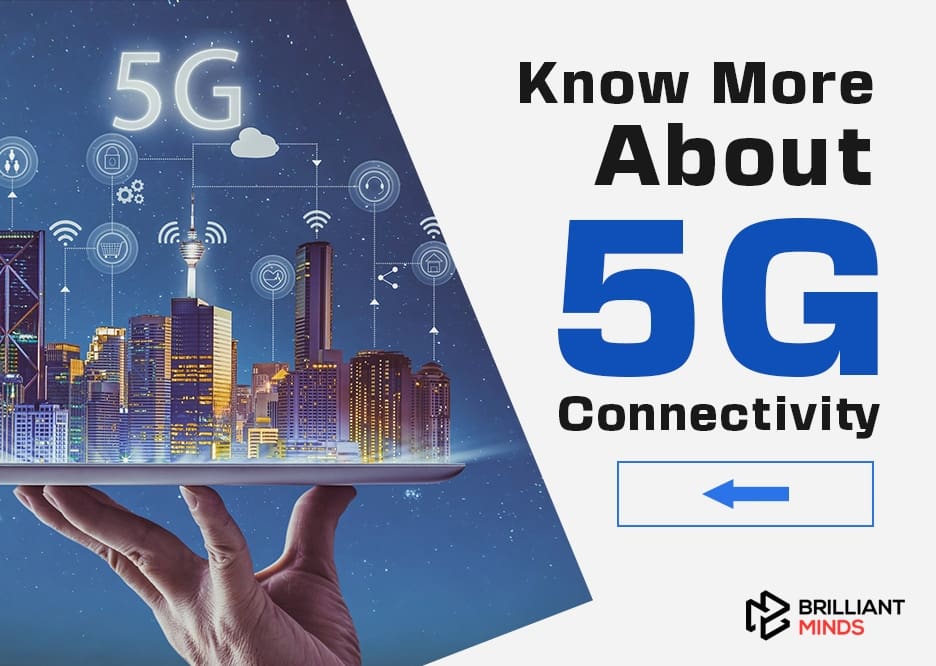5G technology, or “5th generation” technology, is the latest cellular technology designed to increase speed, reduce latency, and improve the flexibility of wireless services.
The ability to use a phone while driving or away from home was the focus of the first generation of mobile technology. A short-messaging layer was first introduced in 2G. The first smartphones could be introduced thanks to the 3G core network speeds. Also, 4G LTE allowed fast data transfer rates, allowing us to view mobile video with less buffering. These technologies paved the way for many smart devices and location-based services. Now, the newest version of cellular technology, known as fifth-generation wireless (5G), is designed to significantly speed up and improve the responsiveness of wireless networks.
The theoretical top speed of 5G technology is 20 GB/s, compared to 1 GB/s for 4G. Another advantage of 5G is lower latency, which can improve the performance of business applications and other digital services (like online gaming and video conferencing, etc.).
Unlike previous cellular technology generations (such as 4G LTE), which were only concerned with ensuring connectivity, 5G takes connectivity to a new level by offering customers connected experiences delivered through the cloud. Cloud technologies are utilised by 5G networks, which are virtualised and software-driven.
How does 5G technology function?
The network architecture has seen improvements due to 5G technology. Massive MIMO (multiple inputs, multiple outputs) technologies are incorporated into new antennas, allowing more data to be transmitted simultaneously between more transmitters and receivers. On the other hand, 5G technology is not restricted to the new radio band. It is intended to provide a network that converges licensed and unlicensed wireless technologies. As a result, customers will have access to more bandwidth.
The 5G architectures are software-defined platforms where software is used to control networking capabilities. With the help of developments in virtualization, cloud-based technologies, IT, and business process automation, 5G architecture is now agile and flexible and can give users access from anywhere at any time. Software-defined subnetwork constructions called “network slices” are possible in 5G networks. With the help of these slices, network administrators can specify how users and devices should interact with the network.
Additionally, 5G enhances the online experience by enabling automation through machine learning (ML). Machine learning (ML), and eventually deep learning and artificial intelligence (AI), must be used in automation for 5G networks to meet the demand for response times of a fraction of a second. Infrastructure costs will decrease due to the automation of provisioning and proactive traffic and service management, which will also enhance the connected experience.
What types of 5G internet services are available?
There are two types of 5G internet services available at this point in time.
5G Broadband services: Internet access for households and businesses is provided through 5G broadband services without the need for a wired connection to the building. To do this, network operators place new radios in close proximity to buildings at small cell sites to send a signal to a receiver on a roof or a windowsill that is amplified inside the building. As fixed broadband services do not require the installation of fibre optic cables in every home, it is anticipated that operators will be able to offer broadband services to homes and businesses at a lower cost. Moreover, operators just need to connect fibre optics to cell sites, and users can then use wireless modems in their homes or places of business to access 5G internet services.
5G cellular services: Users get access to 5G cellular networks through operators’ 5G cellular services. These services began to be rolled out in 2019 when the first 5G-enabled (or 5G-compliant) devices became commercially available. The completion of mobile core standards by 3GPP is also necessary for the delivery of cellular services.
What are the benefits of 5G services?
There are three major advantages of 5G networks over their predecessors, and they are:
1. 5G is intended to operate at typical speeds of 150–200 Mbps, is up to 10 times faster than 4G. Its peak speed can exceed 1 GB/s.
2. When a device is connected to a 5G network, there is no time lag because 5G offers minimal latency.
3. Even in congested settings like cities or major gatherings, 5G has a ton of capacity and can manage many users and devices accessing the network simultaneously.
Due to the above benefits, we can use 5G for the following reasons:
- You can use 5G Home Internet to download and stream content faster without pauses or buffering delays.
- You can use it for futuristic technologies like augmented and virtual reality (AR).
- You can safely operate driverless and connected vehicles by connecting the IoT.
- Make it possible for smart cities to develop.
- Create the conditions for the future of healthcare by enabling almost real-time remote surgery to be performed across extremely long distances.
- Aid in rescue efforts during emergencies and connect drones for medical purposes.

